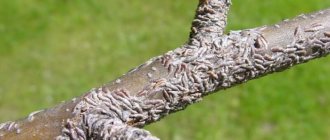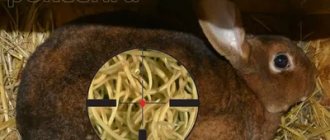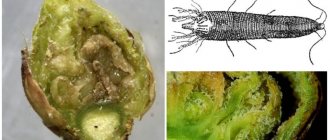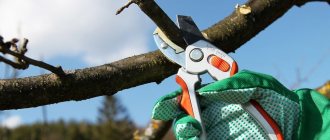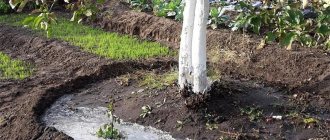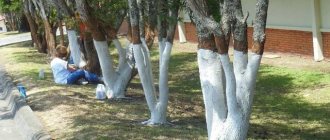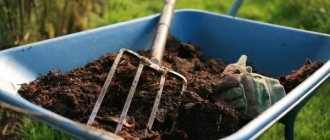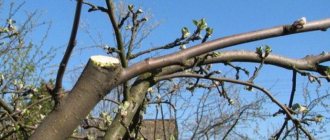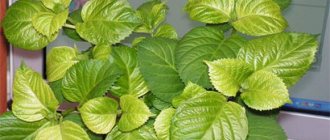Amber droplets of gum appearing on the bark of a tree are an alarming sign that indicates that something is wrong with the tree. What is gum bleeding and how to deal with it?
Gum formation, or gommosis, is a very common phenomenon. Most often it can be observed in cherries, plums, apricots, peaches and other stone fruits. It manifests itself by the release of a viscous brown liquid, which appears on cracks in the tree bark and hardens over time. Sometimes droplets of gum can be seen on the leaves or fruits of plants.
Why cherry resin is dangerous: treatment, prevention, 5 folk remedies
Many of us, as children, ate gum-like resin from fruit trees. But now, as a gardener, I know that the resin that appears on the cherry tree needs to be treated. I will tell you about the causes of gum formation and what to do with this condition.
Signs
Gum discharge or gommosis is the process of secreting resinous drops from plant tissues. Resin is formed not only on the trunk, but also on branches, leaves and fruits. Cherry gum is a signal for depletion and death of the tree.
To prevent gum development, wounds on fruit trees should be lubricated with garden varnish. Photo: good-tips.pro
The composition of the garden pitch is as follows:
- paraffin - 6 parts;
- rosin - 3 parts;
- vegetable oil - 2 parts.
Causes
There are reasons why cherry resin is released:
- sudden changes in ambient temperature;
- sun and frost burns;
- high air humidity;
- damage from severe frosts;
- mechanical damage to shoots and trunk;
- incompatibility of scion and rootstock;
- excess nitrogen in the soil;
- calcium and potassium deficiency;
- heavy clay soil;
- overloading the tree with fruits;
- the presence of other diseases and pests of cherries;
- Excessive tree pruning is also incorrect.
Treatment
As soon as you notice that the gum is flowing down the trunk and the leaves are drying, you need to immediately begin treatment. There are three rules to follow:
| 101widgets.com ” src=”https://qlumba.com/wp-content/uploads/2019/10/fmg5da96e4daa7162.png” alt=”table_pic_” w /> | Rule 1. Follow treatment deadlines
|
| sait-pro-dachu.ru ” src=”https://qlumba.com/wp-content/uploads/2019/10/fmg5da96e4e69c626.jpg” alt=”table_pic_” w /> | Rule 2. Remove gum
|
| fasaddomstroy.ru ” src=”https://qlumba.com/wp-content/uploads/2019/10/fmg5da96e4ef03314.jpg” alt=”table_pic_” w /> | Rule 3. Process slices
|
Prevention
- Avoid damage. Carry out pruning carefully, do not remove the old bark. Observe the terms of sanitary pruning.
- Whiten the standard. To prevent sunburn, whitewash annually in early spring.
- Choose a landing site. Plant trees in well-drained and nutritious soil. Avoid flooding of the area.
- Select variety. Choose varieties for planting that are suitable for your climate zone.
- Prevent freezing. To protect from frost, create additional shelter by wrapping the skeletal branches with burlap.
- Follow the rules of care. Water, apply mineral and organic fertilizers according to the specified standards.
- Fight pests and diseases. Carry out preventive treatment according to the growing season.
5 folk remedies for cherry diseases
Diseases:
Recipe:
- collect leaves with cuttings and rub them on the wound;
- repeat after 15 minutes at least 4 times;
- Apply sorrel mince in a thick layer to the wound and bandage it;
- repeat the compress 4–5 times per season
Features of caring for cherries: 4 rules
- Cherry tolerates drought and heat well;
- needs watering during fruit formation;
- water several times in the fall before the leaves begin to fall;
- water volume 3-5 liters per adult tree
Reviews from gardeners
sanych59:
“It looks like your gum growth on the trees is a consequence of a fungal viral disease. It may also be a consequence of frost damage or unforgiving tree pruning. This didn’t happen on my cherries, but I remembered there was gum production on the cherries. I think it was caused by frost damage in the spring. I confess I didn’t whiten the trees and now I don’t whiten them, but now I tie the boards in a circle. I drill holes in the boards, run a rope through them and tie them together, and when the snow melts off, I remove them.”
Gardening:
“To combat gum deposition in stone fruits, I furrow the trunks and skeletal branches of trees in the spring at the beginning of sap flow. As a result, for 18 years now, since the first furrowing, there has not been a drop of gum on any of the three cherries. I make furrows on the trunk along the circumference every 15-18 cm, and on skeletal branches - vertically parallel furrows every 8 cm from one another. I carry out this operation on trees after a year, sometimes after two, depending on how the previous furrow has expanded. As soon as they have expanded by more than 4 mm, in the spring I make new furrows between the old ones.”
Why is the plum crying?
Very often, gum disease makes itself felt in areas with acidic and highly moist soil, as well as after the use of large doses of fertilizers in conditions of high humidity.
Gommosis can begin either with too much watering or with stagnant water. In this case, the roots absorb too much moisture and all the beneficial substances that the tree stored dissolve in it, initiating the process of gum formation. During fog, especially in spring and autumn, as well as in winter during thaws, there is literally an outbreak of gum production. The main cause of gommosis is excess potassium, nitrogen, and, to a lesser extent, magnesium. Gardeners apply potash fertilizers with enviable persistence, although most soils do not need them. It's all about the availability of the microelement. Excessive doses of nitrogen not only interfere with the ripening of wood, but also displace calcium, make phosphorus unavailable, and provoke an excess of potassium. As a result, salt metabolism is disrupted. In addition, nitrogen accelerates the growth of green shoots to the detriment of wood formation. Therefore, all nitrogen fertilizing is prohibited from mid-July. Since ancient times, people have used gum to treat diseases of the respiratory system, gastrointestinal tract and oral cavity. Modern research has shown that gum actually has bactericidal properties and contains valuable sugars, tannins, and pectins. Having analyzed and studied gum production, scientists came to an interesting conclusion: its appearance in stone fruits may also be caused by a lack of calcium in their tissues. With its deficiency, the cell walls of leaves and wood become fragile, which stimulates gommosis. Therefore, it is necessary to fill the gap.
A common cause of gum formation is excessive and abundant watering, leading to stagnation of moisture in the tree trunk. In stone fruit crops, the root system is superficial, and the tap roots extend to a depth of 2 meters. Insufficient watering can lead to inaccessibility of microelements, in particular potassium and phosphorus. Hence the nutritional imbalance.
Sweet cherries, apricots, plums and cherries can respond with gommosis to severe and untimely pruning. Poorly or completely unsealed cuts are also the cause of gum release. To reduce trauma, it is better to remove (break out) green growth that is not woody, while the branches are still very thin. Small wounds resulting from such an “operation” heal painlessly. And the pruning itself must be done on time.
And don’t rush to cover up the cuts right away, let them dry a little - wait a day or two. During this time, the tree will start working, starting to scar and restore the surface layer of cells. On a wet cut, the garden varnish does not apply tightly and does not dry for a long time. And underneath it, ideal conditions are created for the development of pathogenic flora. As a putty, you can use either a clay mash or products with antibacterial properties. Good results are obtained with a varnish containing 3% copper sulfate.
It makes its own contribution to gum production and climate. Stone fruits are heat lovers. Apricots and peaches, plums and cherries are afraid of critically low temperatures. After a harsh winter, trunks often have cracks, frost holes, and sunburn. Tree branches also suffer during drying spring winds. Prolonged thaws are fraught with warming. Also, the development of gum disease is affected by planting in cold and drafty places (pay attention to the table, which indicates the winter hardiness limits of stone fruit crops.)
Gum weakens trees. If the lesions are small, then gommosis does not pose a serious danger and the plant will try to cope with it itself. But if the affected area continues to grow, urgent measures must be taken to save the tree from death.
Treatment of gommosis depends primarily on the cause of its appearance. If there is an excess of potassium, then add its antagonist - calcium. If it is a fungal infection, cut out the damaged branches and treat the trees with fungicides, a 1% solution of ordinary copper sulfate, or any other copper-containing solution.
To combat gum deposition, they also treat with copper sulfate: a 3% solution in winter, and a 1% solution in spring, “along the green cone” in the phase of swollen, but not yet blossomed buds with a sharp green end. This spring treatment is also good because it protects the buds from return frosts: it not only increases winter hardiness, but also delays flowering. French gardeners 3-4 times a year (including twice in winter) spray stone fruit crops with a solution of iron sulfate: 3% in winter, and 1% in spring using a “green cone”. Iron sulfate combines the properties of a fungicide, insecticide and microfertilizer. One treatment can not only destroy pathogens, but also increase plant immunity, and in conditions of iron deficiency, provide additional fertilizing.
Preventive spraying with Bordeaux mixture or other copper-containing preparations is effective in the fall after leaf fall and in the spring before the buds swell. Work can be carried out at low temperatures, but always positive, so as not to cause even more harm to the tree. Indeed, during night frosts, water that gets into the depressions of the bark can lead to its rupture and the appearance of new wounds.
As for the direct treatment of gum disease, the lesions and sore spots need to be cleaned down to healthy tissue with a coverage of 4 - 5 millimeters, disinfected with a 3% solution of copper sulfate or iron sulfate (30 g per 1 liter of water) and covered with garden pitch. If a large area is bleeding gum, it is better to cut the entire branch back to healthy wood.
Proper tree care, especially the trunk, is very important. The trunk and main branches must be whitened, and the soil must be limed. It is also necessary to follow agricultural practices: avoid one-sided or excessive nitrogen fertilizer; when planting, use lighter, well-aerated soils for stone fruit plants rather than heavy, floating, clay soils. Avoid warming of the bark in the area of the root collar. And of course, treat plantings against pests and diseases.
It is important to choose zoned frost-resistant varieties that are less susceptible to frostbite, sunburn, and resistant to high humidity and major diseases of stone fruit crops.
- Symptoms similar to gum bleeding (depressed or dead areas of the bark and intense flow) can also be with bacterial stone carcinoma,
- continues Alexander Alexandrovich.
— Burn-like zones form on the branches and gum appears. The disease is especially harmful on apricots, cherries and cherries. There have not yet been any cases of the spread of bacterial cancer of stone fruit crops in Belarus. Since there are practically no effective measures to combat this disease, it is usually not possible to save the plant from death. Therefore, all attention is paid to prevention: disinfection of pruning tools, covering wounds with garden varnish, avoiding mechanical damage to trees. It is best to uproot and burn dead and severely damaged plants without regret. ADVIСE _
Gum discharge in cherries - causes, prevention and treatment
One of the common diseases among fruit trees is gum disease (gommosis). Gum is released from the tree - a light brown liquid resembling resin or glue. Many people chewed the gum; it has a pleasant woody taste, but no one thought that this could lead to the death of the tree. Treatment of gum disease in cherries, cherries and other stone fruits should begin at the first signs of the disease.
Hommosis weakens the plant's immunity and negatively affects its growth. If clumps of resin are already visible on the tree, then you need to start treatment, since the affected areas provide access to pathogenic bacteria.
The most common causes of the disease:
– sudden changes in temperature; - mechanical damage; – improper care of the plant; – pests; – excessive amounts of fertilizers; – lack of calcium.
Before planting a cherry tree, you should pay attention to the seedling. It should be healthy in appearance and without damage to the trunk and root system.
You need to plant in loose soil because the roots need to breathe.
High humidity should be avoided and an interval should be observed when fertilizing the plant.
Treatment of gum disease in cherries
If it was not possible to avoid the disease, then you need to start treatment:
– When sap appears on the trunk, the affected areas can be lubricated with ground sorrel leaves. Rub for 5 minutes 2 times a day. Continue this procedure until the resin completely disappears.
– You can spray the plant with a solution of “Nitrophen” in the proportion of 400 g of product per 10 liters of water.
– After flowering and before the fruits appear, you can use “Preparation 30 plus” (200 g per 10 liters of water).
– After treatment, you can use a herbal disinfectant - copper sulfate 10%. Mix in a ratio of 10 g per 1 liter of water.
Garden varnish is an indispensable assistant in the fight against tree diseases. You can buy it at the store or prepare it yourself.
Let's look at several recipes for effective preparations for gum removal.
1. Mix linseed oil, spruce resin, wheel ointment and turpentine. Put it on fire. Cook over low heat, after boiling, simmer for 25 minutes. Then cool.
2. Melt wax and propolis over fire. Grind the rosin and add to the mixture. Bring to a boil and pour in turpentine. Cool, mash.
3. You can take beeswax, rosin, unsalted lard. Melt lard and wax. Add rosin to this mixture. Boil and wrap in parchment paper.
4. Crushed charcoal, rosin, linseed oil, beeswax. Melt the wax and add the above ingredients. Before applying to the barrel, the mixture should be slightly warmed up.
5. Medical alcohol 70%, rosin and lard. Melt rosin and lard, add alcohol. Store in a tightly closed container, as the alcohol may evaporate.
Gommosis and medicinal properties of gum
The substance that is released during gommosis - this is what the secretion of gum on cherries, sweet cherries and other stone fruits is called - has long been used in folk and official medicine. Cherries have a number of medicinal properties, and this applies not only to the fruits, but also to the bark and leaves. People even use the stems of the berries as a diuretic. Cherry gum has a complex composition, most of all it contains arabine and galactose. It is incapable of being completely absorbed by the human body, but, dissolved in water, it is an excellent enveloping agent. Therefore, first of all, it is used at home to treat gastrointestinal diseases.
Photo: © upload.wikimedia.org
By creating a feeling of fullness, it reduces appetite; this property is used in diets for weight loss. Cherry gum will be useful in the following cases:
- Diseases of the cardiovascular and nervous systems. There is evidence that it lowers cholesterol levels.
- Diseases of the urinary system - reduces swelling and improves kidney function, helps with cystitis.
- Arthritis and other joint diseases.
- Disorders of the liver and gallbladder.
- The gum is rich in iodine, improves the activity of the thyroid gland, and helps to avoid surgery for nodular goiter longer.
This substance should not be abused. The maximum dose for a middle-aged adult is 38 g per day. This amount also includes gum, which is part of various food products.
Gum deposition in cherries - how to treat correctly?
The viscous liquid on the cherry trunk is a disease of the plant. Although few people know about this, considering the phenomenon natural and natural.
The appearance of amber streaks on the trunk of a fruit tree is called gum bleeding.
Causes
Gum on cherries is released to the surface from cracks in the trunk. The amber, viscous, slightly bitter liquid attracts the attention of children, in particular, who chew it with pleasure. Some people make crafts out of the relatively hard material. Gum discharge is a manifestation of a disease called gommosis. The disease is extremely dangerous for the plant, as it significantly inhibits the growth of the fruit crop, reduces its supporting forces and can cause death.
As a rule, gum gets to the surface of the trunk through cracks in the trunk, less often through the fruits. There are many reasons why cherry bark cracks. Damage to the cortex occurs when:
- Illiterate tree care, non-compliance with agrotechnical subtleties.
- Violation of the rules for covering plants for the winter. The bark can form cracks when exposed to frost.
- Plant the plant in direct sunlight. The strong sun burns the bark, causing cracks to appear.
- Excess of added nutrients.
- High soil moisture.
- Sanitary pruning, in which a large number of branches are removed.
| i0.tabletki.ua ” src=”https://qlumba.com/wp-content/uploads/2019/10/fmg5da96e5123dec6.jpg” alt=”table_pic_” w /> | Remedy 2. Iodine Diseases: Recipe:
|
| botanichka.ru ” src=”https://qlumba.com/wp-content/uploads/2019/10/fmg5da96e521e68f2.jpg” alt=”table_pic_” w /> | Remedy 3. Horsetail infusion Diseases: Recipe:
|
| infakty.ru ” src=”https://qlumba.com/wp-content/uploads/2019/10/fmg5da96e54aff735.jpg” alt=”table_pic_” w /> | Remedy 4. Marigold infusion Diseases: Recipe:
|
| i2.wp.com ” src=”https://qlumba.com/wp-content/uploads/2019/10/fmg5da96e5594b6a5.jpg” alt=”table_pic_” w /> | Remedy 5. Tomato decoction Diseases: Recipe:
|
| ydobreniam.ru ” src=”https://qlumba.com/wp-content/uploads/2019/10/fmg5da96e57ea21b5.jpg” alt=”table_pic_” w /> | Rule 2. Loosen
|
| sadovodya.ru ” src=”https://qlumba.com/wp-content/uploads/2019/10/fmg5da96e59091053.jpg” alt=”table_pic_” w /> | Rule 3. Fertilize
|
| sadproekt.ru ” src=”https://qlumba.com/wp-content/uploads/2019/10/fmg5da96e59e58286.jpg” alt=”table_pic_” w /> | Rule 4. Trim
|
- Failure to follow pruning rules.
- Mechanical damage to the trunk. Which leads to the formation of mushrooms under the bark.
- Damage to the bark by insects. In particular, the bark beetle.
- Careful handling of the plant. Do not injure is the main rule of growing not only cherries, but also any other fruit plant. Some gardeners, especially beginners, fanatically tear off the old bark on the trunk and cut off the branches on a large scale. Stop this kind of treatment! The bark is a natural protector, and removing dead tissue leads to damage to living fibers. As a result, cherries are more susceptible to the negative effects of sun and frost.
- Competent selection of varieties in accordance with the climatic characteristics of the region. Professionals recommend giving preference to zoned varieties.
- Whitewashing trunks and skeletal branches is a reliable protector from the scorching spring sun. Wrapping the trunk in the winter with covering materials - burlap, spruce branches - will also help prevent gum deposition in cherries (what to do with this method).
Why the bark on cherry trees cracks and what to do in this case is a question that concerns all caring gardeners. After all, they know that the disease can lead to a significant reduction in yield.
How to prevent non-communicable disease
It is much easier to prevent, since treating gum disease on cherries will take more time and effort.
Compliance with agricultural technology and the use of simple tips from professionals will help prevent the development of the disease, and therefore preserve the varietal tree:
Foreign gardeners who grow cherry orchards recommend using the furrowing method: shallow furrows are made along the circumference of the branches every 18-20 cm. The operation is repeated every 2 years. Also, a proven method of prevention is spraying the plant with a solution of copper sulfate (in winter, a 3% solution is prepared, in spring and summer - 1%). Treatment is carried out up to 4 times a year.
Treatment of the disease
What to do if resin appears on the cherry? Sometimes discovering the cause of a disease is the main factor in recovery. Still, to treat tar deposits you will need a sharp knife (disinfection in a manganese solution is required), a solution of copper sulfate and garden pitch.
Stages of treatment:
- Clean the affected area on the trunk or branch. The cut is carried out right up to the appearance of healthy wood.
- Treat the cut with a 1% solution of copper sulfate. After 10 minutes, repeat the procedure.
The operation should be carried out with clean hands as carefully as possible. Additional mechanical damage to the tree is not necessary.
How to prepare garden varnish
Today, you can simply buy a disinfectant garden varnish at a specialized center. And yet, many professional gardeners prefer a substance prepared independently.
There are different ways to prepare garden varnish. All recipes came to the modern world from the distant past and are proven:
- 1.5 parts spruce resin (heat until warm), 2 parts flax oil, 0.5 parts wheel oil. Boil for 1.5-2 hours, cool, add 1 part of turpentine, mix thoroughly.
- Simmer 3 parts wax and 2 parts propolis over low heat. Add 6 parts of rosin. Boil for about 1 hour, cool. Add turpentine. Thick ointment is ready for use.
Despite the fact that gum is widely used in handicrafts and medicine, at the first appearance of its accumulation it is worth taking drastic measures. Naturally, it is much easier to cut off the glue that has formed on the cherry (what to do in this case is described above). But it’s better to try to prevent the fruit from becoming gummed.
Preparing the brew
Garden putty or varnish are necessary not only for the treatment of gum disease; they are useful if the tree has mechanical damage or is undergoing scheduled pruning. There are many recipes for their preparation. Simmer 2 parts propolis and 3 parts wax over low heat, add 6 parts rosin and let it boil. After cooling, combine with 1 part of turpentine and mix well. Before using this putty, you will have to knead it with your hands. Fresh unsalted lard - melt 1 part, add 4 parts rosin and 1 part beeswax. After boiling for twenty minutes, allow to cool, knead and pack in parchment or oiled paper to protect it from drying out.
Melt two parts of beeswax, add 10 parts of rosin, one part of sifted crushed charcoal and 0.5 parts of raw linseed oil. Allow the mixture to boil and cool. Before applying this putty, you need to warm it up a little. Melt 16 parts of rosin and 1 part of lard. After cooling, mix all this with eight parts of ethyl alcohol. To prevent the alcohol from evaporating, store the brew in a hermetically sealed container. Melt 400 g of beeswax, add 400 g of rosin and 80 g of lard.
When the mixture has cooled, pour 400 g of turpentine into it. People have been using var and similar substances to treat gums and wounds on trees for many centuries, using for this purpose what is always at hand. Sometimes this recipe is useful even today: equal parts of mullein and fatty clay are mixed, and a little wool is added for viscosity. Gardeners have been using Forsyth ointment for more than 300 years. It is prepared from 16 parts of mullein, 1 part of river sand, to which are added 8 parts of chalk or dry lime and wood ash. The ointment layer should not be thick - 2.5 mm is enough.
For a better result, powder is sprinkled on top of the ointment; it is prepared from 6 parts of wood ash and 1 part of chalk. Wounds should be treated in dry weather. The product cannot be stored; it is prepared anew each time. Sometimes it is required that the garden varnish does not allow moisture to pass through. This putty is prepared according to the following recipe: take 200 grams of wax and black shoe polish, add 100 g of thick turpentine and 50 g of table salt. The mixture is melted over a fire and allowed to cool. Each gardener, among the many recipes, chooses the one that best copes with the problem of gum growth on cherries.
Gum removal from cherries, treatment of resin on a tree, control measures and what to do
Options for getting rid of the problem
Before planting a cherry tree, you should pay attention to the seedling. It should be healthy in appearance and without damage to the trunk and root system. You need to plant in loose soil because the roots need to breathe. High humidity should be avoided and an interval should be observed when fertilizing the plant. If it was not possible to avoid the disease, then you need to start treatment:
- When sap appears on the trunk, the affected areas can be lubricated with ground sorrel leaves. Rub for 5 minutes 2 times a day. Continue this procedure until the resin completely disappears.
- You can spray the plant with a Nitrophen solution in the proportion of 400 g of product per 10 liters of water.
- After flowering and before the fruits appear, you can use “Preparation 30 plus” (200 g per 10 liters of water).
- After treatment, you can use a herbal disinfectant - copper sulfate 10%. Mix in a ratio of 10 g per 1 liter of water.
Resin Application
Even the ancient Greeks treated damage to trees by coating them with resin. It’s not for nothing that people call it resin. Traditional healers have been using the healing properties of resin from various trees for centuries and with great success. Not only medicines for people, but also for trees have been created based on resins. Multi-component garden balm “Zhivitsa” has a complex effect on tree wounds: it disinfects, heals, and stops the flow of juice from a fresh wound.
There are many garden putty recipes that use resin. Here are two of them:
- melt 800 g of pine or spruce resin, add 400 g of beeswax from lard and mix;
- melt 400 g of resin to a liquid state, allow to cool and mix with 25 g of linseed oil and 50 g of alcohol.
Most recipes for garden varnish use rosin, which is also a product of resin from coniferous trees.
